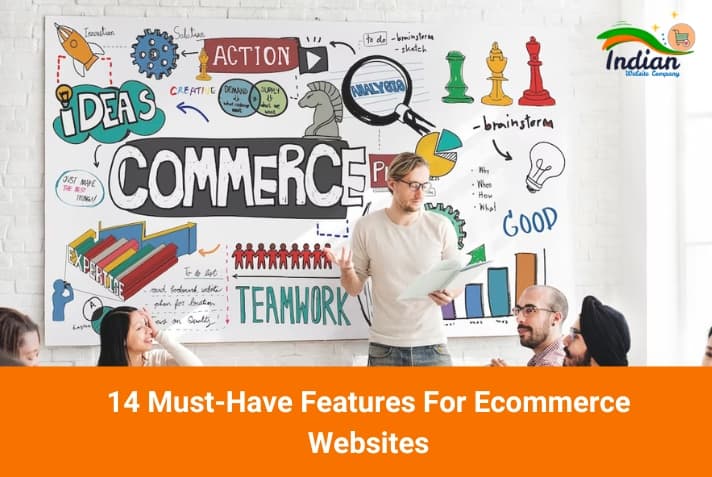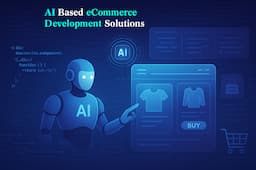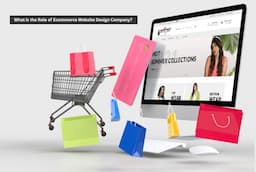14 Must-Have Features For Ecommerce Websites

Are you thinking to open an e-commerce store or want to develop an e-commerce website? Then these tips/features are very helpful for you. Let's see how.
Creating an e-commerce experience that will amaze your customers is as easy as getting a little inspiration from top e-commerce brands.
Let's see which features you must include in your e-commerce website
1. Site Search
In addition to user-friendly navigation, site search is a feature found on most top e-commerce sites. This allows customers to bypass navigation and find exactly what they need.
2. Product Video
You can increase conversions by adding videos to your product page. According to think with Google, more than 50% of shoppers say online video has helped them make purchase decisions for brands and products. Most e-commerce platforms allow retailers to add videos and images to their product pages.
3. Product Review
The most popular format for user-generated content on e-commerce websites is product reviews and ratings. This section of the e-commerce product page is important in providing shoppers with social proof that their products meet their needs.
eBay allows customers to rate and review their products, which are displayed below the product description and sponsored items.
4. Generous return policy
Want to increase consumer confidence in the products you sell? Provide a generous return policy and include it on your product page. Because if there is any deffect, then customer can easily claimor return, which will develope a trust.
5. Product FAQ
Another way to integrate user-generated content into your e-commerce store is to add a section that contains the most frequently asked questions from your customers. This section is useful for your business in many ways. Increase sales by answering customers' pre-sales questions about products. Reduce the time customer service spends answering pre-sales and post-sales questions about your product.
6. shipment tracking
Once a customer places an order, the most important question is when will my order arrive? Allow your customers to easily check their current order status on your website.
7. Push message
If you want to bypass spam filters and social media algorithms, the next best way to convert e-commerce store visitors to subscribers is to use push notifications. The push notification service allows visitors to subscribe to the latest updates in their browser. If you want to notify your subscribers about the promotion, you can send a message that is sent to Notification Center via your browser.
8. Chatbot
One of the benefits of running an e-commerce website is that you can make money 24 hours a day, 7 days a week. This also means supporting customers during these times. According to a LivePerson survey of 5,000 consumers, positive sentiment towards the use of chatbots almost doubled from 31% to 61% between 2020 and 2021.
Many e-commerce stores use chatbots to allow online shoppers to ask basic questions and navigate to specific products or support pages.
9. Coupon code
When a coupon or discount box appears on the checkout page, consumers often search for the coupon code on Google.
In the United States, 88% of consumers use coupons when shopping through coupon sites such as slickdeals.com, groupon.com and retailmenot.com. If you want to keep your customers on your website throughout the checkout process, use your own coupon code to offer them big deals.
10. Product availability filter
Do customers have multiple options regarding pick-up or delivery methods? Customers can quickly find products available with their desired pick-up or delivery options.
11. Mobile application
Consider mobile apps for stores as well as mobile-friendly stores that allow shoppers to shop from any device. With the mobile app, you can keep your brand in the customer's mind by placing the app icon / brand logo on the smart device that your customers use most often.
You don't have to wait for your customers to open your browser or other social media apps or emails to get the latest sales news. You can send these promotional updates via the app to all customers who have notifications enabled.
12. Easy navigation
An easy-to-use navigation system is key to helping customers find the products they need quickly. Products should be grouped logically with the most popular categories listed first.
13. Foot navigation
Have you thought about how best to use your website footer to help your customers find your top product? Try a list of links to the top products, services, and information that your customers want to find.
14. Email opt-in
According to Mailchimp's benchmarks, emails sent by e-commerce businesses have an average open rate of 15.68% and a click-through rate of 2.01%. This is important given the revenue potential of e-commerce email.
If you can't get a visitor to make a purchase on your website, one of the next best conversions for your business is to get the visitor to subscribe to your email list. In this way, you can contact them for future sales and email promotions.
Final words
Building an e-commerce website has never been easier. It's no longer an overly technical and painstaking process that has discouraged many large and small businesses from joining online marketplaces. Great e-commerce website design is all about functionality and repeatability. Start with the important pages and design a simple prototype. Test them with your team to make alliteration. Launch a new look and collect direct insights from your customers. Between optimizing conversions, landing pages for new products, and seasonal promotions, there's always a lot of "design" work at hand.
Need an eCommerce website for your business at affordable prices? Contact foduu.com. We create user-friendly, mobile responsive & fast-loading eCommerce websites at affordable eCommerce website packages in India.


